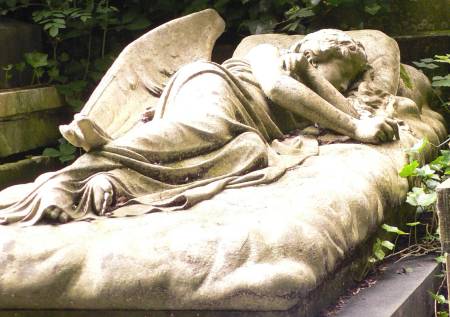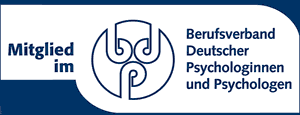HYPNOSIS THERAPY IN Hamburg Altona Ottensen and Hohwacht Baltic Sea Plön Holstein
Are you interested in hypnotherapy in Hamburg Altona Ottensen? and in Hohwacht Baltic Sea Plön Holstein?
Dipl.-Psych. Egon Molineus is certified as a Psychological Psychotherapist/ Hypnotherapy by the Milton Erickson Society for clinical hypnosis.
For the certificate "Clinical Hypnosis" a completed university degree in psychology or medicine as well as a completed psychotherapy training in another method (e.g. cognitive behavioral therapy) are mandatory prerequisites before the multi-year hypnotherapy training.
Clinical hypnosis is recognized as a scientific method.
It is embedded within a cognitive-behavioral therapeutic treatment in my practice.
Hypnotherapeutic Potentials
Hypnosis increases the potential of cognitive psychotherapy and improves its access to emotions. Because in trance, among other things, the following resources are liberated/activated:
Relaxation
- Suggestibility
- Focusing on selected feelings/sensations of the present (slow motion)
- Focusing on selected moments of the past (age regression)
- Focusing on targeted moments of the future (future projection/future progression)
- Focusing on imaginative activity (absorption)
Awareness/consciousness-raising.
- Dissociation of affects and sensory impressions enables distancing from them.
- Liberation of blocked, desired memories.
- Inhibition of distressing, unwanted memories (amnesia).
Emergence of new intuitions.
- Emergence of new symbolizations.
- Emergence of new/more intense visualizations/mental images.
- Emergence of a new perception of time.
- Emergence of a new perception of sensory impressions (hallucinations), e.g. insensitivity to pain.
- Emergence of new experiences perceived as "real": e.g. reparenting with the help of the therapist.
Allowing previously unused experiences and knowledge.
- Allowing involuntary (unconscious/preconscious) decisions and search processes.
- Allowing involuntary (unconscious/preconscious) physical expression: e.g. hand levitation.
Hypnosis - Induction
How is the trance state (trance consciousness) achieved? The induction into hypnotic trance happens with the help of the following prerequisites/strategies/methods: Sensory stimuli:
- Monotonous, slow, rhythmic, repetitive, gentle, calming acoustic stimulus (such as meditative music/trance music/nature sounds/ticking clock).
- Light stimulus that is synchronized (pacing) with the client's breathing.
The client:
- Maintains a relaxed and comfortable physical posture.
- Makes a rhythmic movement.
- Makes voluntary physical tension-relaxation (as in Progressive Muscle Relaxation according to Jacobson).
- Makes an effort for slow, deep exhalation.
- Focuses their attention:
- On a point (as in the eye fixation method).
- On body sensations such as heaviness/warmth/breathing (as in Progressive Muscle Relaxation according to Jacobson and as in Autogenic Training).
- On hand/arm levitation.
- On counting.
The therapist intersperses verbal, repetitive, interspersed suggestions:
- With a quiet, calm, slowed and monotonous voice.
- That is synchronized (pacing) with the client's breathing.
- That falls during exhalation.
- Of heaviness/calm/regularity/relaxation (as in Autogenic Training).
- Of indifference toward external stimuli.
The therapist applies gentle pressure:
- On the eyelids to intensify the feeling of heaviness in the eyes.
- On the forearms to intensify the feeling of heaviness in the arms.
- On the shoulders to intensify the feeling of heaviness.
Hypnosis – Communication
How is psychotherapeutic work done in hypnosis? By experiencing new helpful experiences directly through all senses, which open access to healing feelings and perspectives. The therapist speaks:
- Ambiguities.
- Possible alternatives.
- General statements.
- Implications.
- Indirect questions.
- Comparisons.
- Potential changes.
- Pseudo-causal statements.
The therapist triggers activating imaginations in the client with the help of:
- Images.
- Stories.
- Metaphors.
- Scenes.
Depth of hypnotherapeutic trance
Hypnotic trance becomes increasingly deeper. Uninteresting external stimuli are gradually switched off/deflected/split off/dissociated, as the processing internal experience:
- Is progressively focused.
- Is perceived through all senses.
- This internal experience and the relationships between its components are increasingly finely discriminated.
- The feelings coupled with this experience are felt more and more consciously. The therapist gives suggestions that increase trust in bodily functions that are carried out involuntarily/dissociated...
Advantages of psychotherapeutic work in trance:

|
The psychotherapeutic work in trance:
- Usually facilitates access to feelings and thoughts that do not appear conscious. It is as if conscious thinking inhibits this access less critically: more freedom.
- A door for involuntary developments is opened, which may be regarded as liberating spontaneity: less compulsion.
- Makes one more receptive to beneficial, solution-oriented suggestions that are selected therapeutically (e.g., "I can do it!" or "YES, WE CAN!").
- Utilizes imaginative resources of people such as dissociation.
- The depth of hypnotic trance is not decisive for treatment success. Light trance states (relaxed somnolence) can actually set strong developments in motion. We work at this hypnosis depth in our HYPNOSIS practice. We do not work in deep trance (somnambulism).
Effects of Hypnosis Therapy
- Immune readiness is increased: among other things, heart rate, blood pressure, respiratory rate, muscle tone and stress hormones are reduced.
- Pleasant relaxation occurs.
- Somatic healing and sleep are promoted.
- Performance can be enhanced.
- Mood and pain can be altered.
- Distancing from fear. This allows one to put it into perspective, change and dissolve it.
- Hypnosis according to Milton Erickson is an excellent tool in TRAUMA THERAPY. The trauma can be reconstructed and processed in the protected trance.
- Combating depression, addictive behaviors such as smoking and eating, sexual problems, psychosomaticdisorders such as tinnitus, irritable bowel syndrome, migraine.
- Changes in daily life and thinking are facilitated. Because the boundaries of everyday consciousness are left behind in the trance. A different level of consciousness is reached. Dormant strengths and creativity are awakened. Memories are evoked in detail and intensely. Productive solution possibilities are found. New insights emerge.
Hypnosis Questions from Other Clients
Previous Questions from Various Interested Parties:
⇒ Social phobics: Those who tend to avoid social contacts and conflicts benefit more with me from a goal-oriented, confrontational BEHAVIORAL THERAPY for social anxiety without hypnosis and even better in one of my therapy groups.
⇒ Psychotics: I do not apply hypnosis in acute psychoses.
⇒ Drug addicts: I do not apply hypnosis in acute substance dependency!
⇒ You as a client want to remember something you have forgotten. That's why you want to come to me...
I do not offer this: In the trance state, images are NEWLY constructed here and now. These images do not necessarily correspond to the images from the past, or perhaps they do. Our brain does not faithfully repeat the information from the past during the playback function. On the contrary: the brain mixes in new creations and very creatively alters the old ones.
⇒ You want to do ONLY hypnosis.
I do not offer this. I use hypnosis interventions as an instrument within behavioral therapy, in moments when I consider it indicated, in order to intensify the cognitive and emotional strategies and to ensure distancing. As a client, you work intensively outside the therapy room all week additionally on your problem with the help of homework, in order to actually change something in your life. A lot of work awaits you.


Hypnotherapy with Sigrid Molineus

|
Sigrid Molineus is trained in hypnotherapy according to Milton Erickson. (Forwarding to her website by clicking).
She has been working as a naturopathic practitioner in her own practice since 1989.
She applies hypnotherapy according to Milton Erickson to uncover psychological backgrounds of physical complaints (psychosomatics) and thus to explore and change the obstacles to healing.
She accompanies serious illnesses such as pain, cancer and others by helping the patient to strengthen their self-healing powers through inner experience and imagination and to change and alleviate the quality of pain.
During her treatment of behavioral disorders (smoking, overweight, nail biting among others) she develops with the client in a step-by-step approach resources, goal images and memory reflexes that help to permanently walk a new path.
An integrated treatment with naturopathic procedures and hypnosis is often sensible.
Expert Opinion on the Scientific Recognition of Hypnotherapy
The Scientific Advisory Board Psychotherapy adopted the following expert opinion on Hypnotherapy in the session of March 27, 2006:
- Foundations of the Assessment The expert opinion is based on the following documents:
- Expert opinion application: "Expertise for assessing the scientific evidence of the psychotherapy method Hypnotherapy" by Prof. Dr. Dirk Revenstorf commissioned by the Milton Erickson Society for Clinical Hypnosis(MEG) and German Society for Hypnosis (DGH) in January 2003.
- Three material volumes with original studies, reviews and meta-analyses as well as a book: Revenstorf, D. & Peter, B. (Eds.) (2001). Hypnosis in Psychotherapy, Psychosomatics and Medicine. Berlin: Springer.
- Abbot NC, Stead LF, White AR, Barnes J. Hypnotherapy for smoking cessation. The Cochrane Database of Systematic Reviews 1998, Issue 2. Art. No.: CD001008. DOI: 10.1002/14651858.CD001008.
- Expert Opinion Mandate/Question It is to be examined whether Hypnotherapy fulfills the criteria for scientific recognition and if so, for which areas of application. For this purpose, the Scientific Advisory Board Psychotherapy according to §11 PsychThG (WBP) examines the evidence of effectiveness for each of the 12 areas of application of Psychotherapy in adults defined by the WBP (Deutsches Ärzteblatt 2000, 97, Issue 1-2, A-59 taking into account the amendment of 16.09.2002, Deutsches Ärzteblatt 2002, Issue 46, A-3132, PP-572) and the eight defined areas of application of Psychotherapy in children and adolescents (Deutsches Ärzteblatt 2000, Issue 33, A-2190) separately. Proof of effectiveness for an area of application can generally be considered given if the effectiveness for disorders from this area has been proven in at least three independent, methodologically adequate studies and at least one study on one of the areas of application includes a follow-up examination at least six months after therapy completion, which also proves therapy success at least six months after therapy end (criterion for determining scientific recognition in an area of application according to WBP resolution of 15.09.2003). In a second step, the Scientific Advisory Board Psychotherapy examines, on the one hand, whether a recommendation for approval as a method for in-depth training as a Psychological Psychotherapist according to § 1 Para. 1 of the Training and Examination Regulations for Psychological Psychotherapists can be issued. According to the WBP criteria, this recommendation can only be issued for those therapy methods that can be considered scientifically recognized for at least five areas of application of psychotherapy in adults (1 to 12 of the application area list) or at least four of the "classic" areas of application (1 to 8). On the other hand, the Scientific Advisory Board Psychotherapy examines whether a recommendation for approval as a method for in-depth training as a child and adolescent psychotherapist according to § 1 Para. 1 of the Training and Examination Regulations for Child and Adolescent Psychotherapists can be issued. According to the WBP criteria, this recommendation can only be issued for those therapy methods that can be considered scientifically recognized for at least four areas of application of Psychotherapy in children and adolescents (areas of application 1 to 8) or at least three of the "classic" areas of application (1 to 5).
- Definition Hypnotherapy defines itself as a psychotherapeutic method that uses the induction of hypnotic tranceas an altered state of consciousness to change problematic behavior, problematic cognitions and affective patterns, to restructure emotionally distressing events and sensations, and to promote biological changes for healing processes. "Hypnotherapy is primarily a solution-oriented treatment method." (Expert opinion application, p. 5). The following principles guide hypnotherapeutic work: Utilization (use of individual characteristics of the patient, their symptom and resistance for change), destabilization (creation of confusion to destabilize entrenched cognitive positions, also with the help of humor), casualness (indirect conveyance of relevant information), minimal change with cascade effect and protection of the unconscious. The human image of Hypnotherapy assumes that an individual already carries the resources for change within themselves. Hypnotherapeutic interventions are disorder-specific and exhibit a high degree of differentiation. Hypnotherapeutic interventions include, for example, the induction of hypnosis and trance states as well as the instruction of patients in generating self-hypnosis. The documentation provides a detailed description of Hypnotherapy including an exact depiction of a typical hypnotherapy session. Hypnotherapy can be conducted as individual or group therapy with children, adolescents and adults.
- Indication Areas According to the definition, the professional representatives of Hypnotherapy claim eleven of the 12 areas of application for adults defined by the Scientific Advisory Board Psychotherapy as indication areas (exception: area of application 11 - "Mental and social factors in intellectual disability (F7 according to ICD-10). For children, sufficient clinical experience exists only in partial areas. Contraindications of Hypnotherapy are acute psychoses, severe personality disorders and lack of hypnotizability (approximately 10% of the population). For traumatized persons and abuse victims, special attention must be paid to ensure that patients retain control over the trance and the content processed therein. Hypnotherapy is not a method with which repressed childhood traumas could be clarified, as there is a risk of false memories and induced distortions here.
- Theory The theory of Hypnotherapy is based on physiological and immunological aspects, learning and memory theories, specific hypnotherapeutic concepts and work on pain perception and processing. Against the background of newer learning and memory concepts (e.g., implicit and explicit memory, non-attentive and attentive learning), it is explained that hypnotic trance inductions stimulate specific activation patterns in cortical and subcortical areas that are also significant for implicit memory processes. Hypnotherapeutic techniques thus favor change processes by bypassing explicit conscious processing of themes and content, stimulating implicit learning processes and more easily filtering out interfering stimuli. The application presents the state of research on specific hypnotherapeuticconcepts (post-hypnotic suggestions, post-hypnotic amnesia) and discusses models of mechanisms of action. It is pointed out that the effectiveness of post-hypnotic suggestions has essentially been proven by individual case studies.
- Diagnostics The documentation primarily describes clinical diagnostics, in which disorder-specific data are collected for planning therapy and evaluating therapy success. Hypnosis-specific diagnostics focuses on clarifying the hypnotizability or suggestibility of the patient, which can be assessed with standardized test procedures or in clinical interaction.
- Evidence of Effectiveness in Adults The 47 studies (49 publications) submitted on Hypnotherapy mostly had a control condition [1]; however, problems arose in part from the fact that non-clinical samples had been studied or that the assignment to study groups did not meet minimum methodological requirements (lack of randomization/parallelization). No studies were submitted for areas of application for psychotherapy in adults 8, 10, 11 and 12 or for areas of application for psychotherapy in children and adolescents 1, 2, 3, 6, 7 and 8. For Area of Application 1 (Affective Disorders, F 3), only one study was submitted. Recognition of this study failed because the clinical status of the studied sample (students) was not documented. For Area of Application 2 (Anxiety Disorders, F 40 - F 42), seven studies were submitted. None of the submitted studies could be recognized. For five studies, recognition already failed because the clinical status of the studied sample was not documented. For two additional studies, particularly weaknesses in the study design (lack of randomization/parallelization) argue against recognition. Accordingly, the review by Revenstorf and Prudlo (1994) is also predominantly based on studies on speech anxiety in non-clinical populations that do not allow generalization to patient populations with clinically significant anxiety disorders. For Area of Application 3 (Stress Disorders, F 43), one study on the treatment of Post-Traumatic Stress Disorder was submitted. This study is recognized. For Area of Application 4 (Dissociative, Conversion and Somatoform Disorders - F 44, F 45, F 48 according to ICD.10), two studies were submitted. Of these, one study was recognized. For the second study, recognition already failed because the minimum methodological requirements for the study design were not met (lack of randomization/parallelization). For Area of Application 5 (Eating Disorders, F 50), one study on "Hypnobehavioral Therapy" for bulimia was submitted. This study was not recognized because the study design does not allow conclusions about the extent to which the hypnotherapeutic and/or behavioral interventions were decisive for the effectiveness of "Hypnobehavioral Therapy." For Area of Application 6 (Other Behavioral Abnormalities with Physical Disorders, F 51, F 52), two of the three submitted studies on sleep disorders were recognized. Recognition of a study on the treatment of sleepwalkers failed already because the sample size (N=11) limited the significance of the study too severely. In Area of Application 7 (Mental and Social Factors in Somatic Diseases, F 54), 12 of the 24 studies were recognized. Eight of these 12 recognized studies refer to coping with short-term medical interventions (operations, births, treatment of burns, chemotherapy), four of the recognized studies refer to the long-term positive influence on the course and coping with a chronic somatic disease. For five of the submitted studies, recognition already failed because the minimum methodological requirements for the study design were not met (lack of randomization/parallelization). Three additional studies could not be recognized particularly due to the lack of proof of the clinical status of the studied sample. Four further studies were evaluated as partially positive, as the expected therapy effects could only be proven for part of the primary target criteria. In Area of Application 9 (Dependencies and Abuse, F 1, F 55), of the seven submitted studies, one study on methadone withdrawal in methadone-substituted opiate addicts and four studies on the application of Hypnotherapy for smoking cessation are recognized. For three of the submitted studies, recognition already failed because the minimum methodological requirements for the study design were not met (lack of randomization/parallelization). A generalizability to psychotherapeutic treatment for dependence or abuse of alcohol or illegal drugs is therefore not justified. Furthermore, for the area of smoking cessation, including additional studies, the current evidence situation is extremely heterogeneous and significantly limits the conclusions on the effectiveness of Hypnotherapy for smoking cessation (Cochrane Review: Abbot et al., 1998). The Scientific Advisory Board Psychotherapy has therefore determined the scientific recognition of Hypnotherapy for the following two areas of application:
- Mental and social factors in somatic diseases (F 54 according to ICD-10)
- Dependencies and abuse (F 1, F 55 according to ICD-10) (evidence exists only for smoking cessation and methadone withdrawal.) 8. Evidence of Effectiveness in Children and Adolescents The submitted studies on the areas of application of child and adolescent psychotherapy refer exclusively to two of the eight areas of application defined by the Scientific Advisory Board Psychotherapy, namely areas of application 4 and 5. For Area of Application 4 - Eating Disorders and Other Behavioral Abnormalities with Physical Disorders (F 50 - F 52, F 54), five studies were submitted. The submitted studies are limited to evidence of effectiveness for Hypnotherapyto improve coping with chemotherapies in patients with cancer and pain in connection with stressful medical interventions. All studies were evaluated as evidence of effectiveness. The effectiveness of Hypnotherapy in this specific area is well documented. However, the study situation does not allow generalization to the effectiveness of Hypnotherapy in the treatment of eating disorders or chronic physical disorders such as compliance problems in diabetes mellitus. No corresponding studies exist for these and comparable clinical pictures. For area of application 4 - Eating disorders and other behavioral abnormalities with physical disorders - there are also no follow-up examinations that prove therapy success at least six months after therapy end. Therefore, scientific recognition of Hypnotherapy for this area of application cannot be determined. For Area of Application 5 (Behavioral Disorders with Onset in Childhood and Adolescence -F 90 - F 92, F 94, F 98 according to ICD-10 and Tic Disorders -F 95 according to ICD-10), two studies on the treatment of enuresis were submitted. Both studies were not recognized. For one study, recognition already failed because the minimum methodological requirements for the study design were not met (lack of randomization/parallelization). The second submitted study cannot be recognized particularly because this follow-up study shows no significant treatment effects for Hypnotherapycompared to the control group. Therefore, scientific recognition cannot be determined for any area of application of psychotherapy in children and adolescents. However, the short-term effectiveness of Hypnotherapy in children and adolescents for better coping with chemotherapies for cancer and other stressful medical interventions is documented.
- Relevance to Healthcare Hypnotherapy is widespread among physicians, dentists, medical and psychological psychotherapists and child and adolescent psychotherapists and is usually learned as an additional method/training. Hypnotherapists are generally also trained in other psychotherapeutic methods. Even before the Psychotherapists Act came into force, Hypnotherapy was not a basic psychotherapeutic method, but was used as an additional psychotherapeutic method for limited indications by already qualified psychotherapists.
- Education and Training Training regulations of the German Society for Hypnosis (DGH), the Milton Erickson Society for Clinical Hypnosis (MEG), the German Society for Medical Hypnosis and Autogenic Training (DGÄHAT) are available. All known curricula of these professional associations explicitly require prior basic psychotherapy training or licensure and several years of professional practice.
- Summary Statement The Scientific Advisory Board Psychotherapy determines in summary that Hypnotherapy in adults can be considered scientifically recognized for treatments in the following areas of application: Mental and social factors in somatic diseases as well as dependence and abuse (evidence exists only for smoking cessation and methadone withdrawal). Hypnotherapy cannot be recommended as a method for in-depth training as a Psychological Psychotherapist according to § 1 Para. 1 of the Training and Examination Regulations for Psychological Psychotherapists, as it cannot be considered scientifically recognized for the required minimum number of five of the 12 areas of application of psychotherapy in adults of the Scientific Advisory Board Psychotherapy or for at least four of the eight classic areas of application. In children and adolescents, scientific recognition cannot be determined for any area of application of psychotherapy. However, the short-term effectiveness of Hypnotherapy in children and adolescents for better coping with chemotherapies for cancer and other stressful medical interventions is documented. Hypnotherapy cannot be recommended as a method for in-depth training as a child and adolescent psychotherapist according to § 1 Para. 1 of the Training and Examination Regulations for Child and Adolescent Psychotherapists, as it cannot be considered scientifically recognized for the required minimum number of four of the eight areas of application of psychotherapy in children and adolescents of the Scientific Advisory Board Psychotherapy or for at least three of the five classic areas of application. Berlin, March 27, 2006 Prof. Dr. Gerd Rudolf (Chairman) Prof. Dr. Dietmar Schulte (Deputy Chairman) Correspondence addresses: Federal Psychotherapist Chamber Klosterstrasse 64 10179 Berlin (Executive office of the WBP of the second term) Federal Medical Chamber Herbert-Lewin-Platz 1 10623 Berlin [1] An overview of the submitted studies on Hypnotherapy in adults and in children and adolescents as well as their evaluation can be found on the WBP homepage (http://www.wbpsychotherapie.de). to the top of the page © Scientific Advisory Board Psychotherapy · last modified 13.08.2007
ht











